What houseplants must be in the house?

Any houseplant once grew in a natural environment. If someone liked it, a small exotic plant got into home culture. The culture of cultivation of indoor plants has overgrown with its own mythology, which endowed some of them with unusual properties, later confirmed or refuted by scientific research.


What are indoor plants for?
In a long winter, indoor plants remain like an island of summer, keeping their leaves green, and those that come from the hot tropics, where the day is always short, even bloom in the coldest season. Perhaps this is what prompted the inhabitants of cold countries to cultivate exotic plants at home.
Much later, with an increase in the general educational level of the population, lovers of indoor plants learned about their benefits for humans. It turned out that plants emit oxygen, which is so necessary for all living things.
And here it became simply impossible to keep the housewives from breeding a variety of indoor vegetation.


It was in the 20th century that the real heyday of indoor floriculture took place. Plants were bought, exchanged, and even stolen. It was believed that the plant acquired by the latter method grows much better. And of course, in addition to this myth, many others have appeared that are still widespread. For example, many are sure that several, even if very luxuriantly, overgrown plants on the windowsill are there not just for beauty, they are here to purify the air. Indeed, air-purifying plants, as it turned out, thanks to scientific research, exist.
Among them there are even those that release phytoncides useful for the lungs into the air, which further fuels interest in indoor plants. That's just to get a tangible healing effect, you need to be in a real forest filled with a variety of vegetation, and it is better to do this in the warm seasonwhen sap flow is most active in plants and, accordingly, evaporation from their surface.


The development of electronic systems and nuclear technologies was accompanied by the search for plants capable of neutralizing the flows of charged particles. Of course, those have been found. It turned out that the thorns of some plants are capable of capturing the ions they need from the air. Thanks to this, cacti have become an indispensable attribute of a room in which a computer or TV is located.
But the medicinal properties of some indoor plants are indisputable. Most professional botanists believe that it was with their cultivation in houses and greenhouses that real indoor floriculture began. The first collections of such plants appeared in European universities and monasteries. Soon, these collections began to be replenished with plants, whose properties required further study. As is often the case, the attractive or exotic appearance of these plants allowed them to become popular and quickly spread to other greenhouses and home collections.

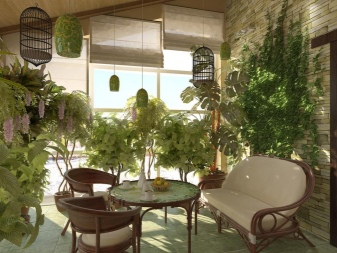
In any hobby, the main emotions remain that it gives.
Growing houseplants can fill life with much-needed joy, without which there will never be a sense of true happiness.
An overview of healthy flowers
Of course, recommending indoor plants, which must be in every home, is rather a hopeless business.Many amateurs have long had their own opinion on this matter. However, we dare to give a list, a kind of top-ranking plants that are most common both in our country and around the world.
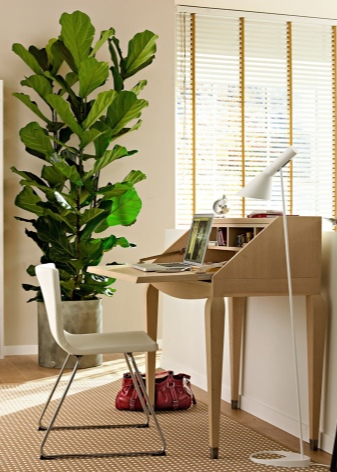

Geranium
A traditional inhabitant of window sills in many homes throughout the second century. A kind of attribute of coziness and comfort. One of the factors of the widest prevalence of this flower is the legend that it can harmonize family relationships. Pink geraniums were given to brides to make their family life happy. In addition, it is believed that this flower brings good luck to all household members.
Substances emitted by geraniums, the smell of which is easily caught, even if there is only one bush in the house, repels some insects, in particular moths and mosquitoes. Volatile phytoncides can reduce headaches, relieve irritability. It is believed that they also normalize sleep. This allowed geraniums to become one of the inhabitants of the bedrooms.


In the presence of geranium, many pathogenic bacteria are inhibited. When colds begin, some housewives recommend rubbing a geranium leaf and trying to inhale its aroma. In the middle of the 20th century, it was customary to grow the plant in hospitals and clinics, since it was believed that it had a disinfecting effect.
However, deciding to breed this plant, you need to listen to both your feelings and the opinions of family members. Not everyone considers the smell of geranium pleasant, and some may experience headaches triggered by secreted substances. In this case, you will have to refuse it. Of course, it is possible to get used to the smell of geranium, but the individual reactions of the body to phytoncides cannot be changed.



Sansevieria
Sansevieria (or mother-in-law's tongue, or pike tail) became popular due to the widespread belief that it perfectly cleans the air by filling it with oxygen. It is also believed that the plant recycles various impurities that can fill the air of modern apartments and offices.
A peculiar spiral formed by long fleshy leaves gave rise to the belief that a plant is capable of positively transforming radiation from a TV and a computer. So the mother-in-law's language moved from the window sills, first to the shelf-wide surface of televisions of the last quarter of the 20th century, and then to computer tables.
All the same the spiral contributed to the emergence of the myth that sansevieria normalizes the flow of energy in the house and is very useful for everyone who is engaged in creative activities.
This further strengthened her position as an inhabitant of a computer desk or study.


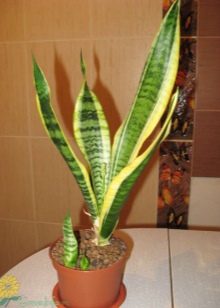
About the esoteric and bioenergetic properties of sansevieria, one can argue for a long time and most often to no avail, it is very difficult to prove or refute them, but the medicinal properties of the plant are beyond doubt. Its juice can be used to treat small wounds, scratches and cuts - it has a disinfecting and hemostatic effect.
It should be noted that moving around the room, for example, from the windowsill to the TV, computer or writing desk and then back to the windowsill, for the pike's tail pass without any external consequences. The plant is very unpretentious and feels great both in bright light and with a decrease in luminous flux.



Asparagus
Another plant that is considered very useful for the home. It is widely believed that it perfectly cleans the air, and the phytoncides contained in its leaves, which really are released into the atmosphere during the period of active growth, help to alleviate the course of lung diseases, including chronic ones, such as asthma.
And of course, how could such a wonderful plant do without balancing energy flows.Currently, asparagus is almost an obligatory inhabitant of living rooms, since, according to some housewives, it is able to neutralize the negative energy of visitors and translate any conversation into a positive direction, maintaining harmony in the house.
The plant is unpretentious, its beautiful feathery leaves can decorate any room. With proper care, it grows quite widely, it is better to grow it all the same in spacious rooms.



Aglaonema
It is considered an excellent air purifier from all kinds of odorous substances that fill the room, for example, after buying new furniture or laying linoleum. Also, the leaves of this plant catch flying dust from the air. To prevent aglaonema from losing its decorative effect, the leaves must be wiped regularly.
The plant sap contains substances that help relieve depressive conditions. It is believed that the juice has disinfecting properties. Gloves must be worn when working with the plant, as its juice contains dangerous poisons. It is for this reason that it is better not to place aglaonema in the children's room.
The plant is undemanding to bright light and reacts well to periodic spraying of leaves, because at home in India it lives in the lower tier of a humid forest.


Peppermint
Mint grows well both outdoors and as a houseplant. A few mint bushes can fill a room with a pleasant aroma. In addition, its leaves can be used as a seasoning for some dishes or added to tea, so it is most often customary to plant it in small pots and place it on kitchen windowsills.
Peppermint essential oils are believed to have the ability to boost mood. The mint in the bedroom will help you fall asleep easily and enjoy a pleasant sleep. The plant also affects insects. The growing mint bush is able to repel flies, mosquitoes and moths.
Some housewives are sure that this plant attracts money to the house, and there will always be an abundance of products in the kitchen where it is cultivated. With the help of mint, you can quickly freshen your breath, just chewing on its leaf.


Ficus
The tropical evergreen ficus has long and firmly established itself not only in greenhouses, but also in apartments. Caring for him is simple: in addition to regular watering, the wide leaves of the ficus, which give a lot of oxygen, must be periodically wiped from dust settling on them. The latter fact became the basis for the belief that the ficus is able to purify the air of the room, collecting all kinds of impurities from it, including dust. Some housewives are sure that the plant, along with the dust, collects various viruses from the air.
Feng shui lovers claim that the ficus directs certain energy flows in such a way that it begins to attract money into the house. Some people think that it is best to have ficus in the bedroom.as it provides a lot of oxygen during the day, and the substances it releases at night can promote healthier sleep and easier awakening.


Cactus
In the last quarter of the 20th century, the cactus has become an almost indispensable attribute of office space. Caring for it is quite simple, and at the same time, the plant gives some revitalization of the room space, not only due to its rich green color, but also thanks to the original form of shoots and leaves, transformed into needles. Usually the plant is placed in all rooms with computer equipment.
The belief that thorns are capable of somehow transforming and redirecting energy flows emitted by computers and televisions is very strong

It is believed that plants endowed with various kinds of thorns and needles provoke an exacerbation of family conflicts... For this reason, cacti are not placed in the bedroom or living room. You should not put them in the nursery either to avoid the troubles associated with injections and splinters. In some plants, the thorns are very small and easily detached, and if they are not removed in time, this can cause suppuration.But in the kitchen, near the microwave, the cactus is the place, all for the same reason - the effect on radiation.
Caring for cacti is easy. It is important to remember that some of them may come from the southern hemisphere, and they have a dormant period in our summer. Observing the watering regime, without turning or rearranging the plant unnecessarily, you can create conditions for its flowering.



Begonia
The many color options for both flowers and leaves have made begonia a very popular ornamental houseplant. It blooms in the saddest time - in winter. Some housewives reinforce their love for this beautiful and unpretentious green pet with the belief that it is able to destroy almost all disease-causing bacteria, and, like a cactus, direct and regulate energy flows from various devices.
It is believed that begonia placed in a children's room balances the psyche of its inhabitants. It is known that this flower, which loves abundant watering during the period of active growth and flowering, perfectly evaporates moisture. This factor, thanks to popular rumor, turned begonia into a plant that facilitates the course of colds, which, combined with the belief in its antibacterial properties, made the plant one of the most powerful home healers.


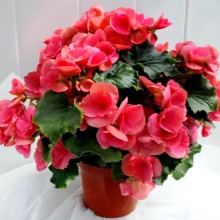
Rosemary
Another great green healer. Indeed, during the period of active growth, the plant secretes a variety of essential oils, and they can actually affect many human systems. First of all, of course, on the respiratory system. However, the hostesses are sure that in a room with rosemary it is not only better to breathe, but also to think.
The leaves of the plant can be added to tea - this gives the drink tonic properties. An infusion of several rosemary leaves can be used to gargle for colds.
Plant care is quite simple.
Rosemary is an excellent ornamental plant, delighting not only with flowers, but also with a pleasant shade of shoots.


Spathiphyllum
Mistresses have long noticed this plant, for some reason deciding that it helps women find family happiness. This is how its unofficial name appeared - "female happiness". They also tried to put it in the room where the unmarried girl lives, without any special explanations, hoping that the flower will speed up the appearance of the betrothed.
Recently, the plant has been popularized as an inhabitant of office premises. It is believed that a lover of a humid microclimate is spathiphyllum, during the growth period it actively absorbs various impurities directly from the air, clearing the room, including from unpleasant technical odors.

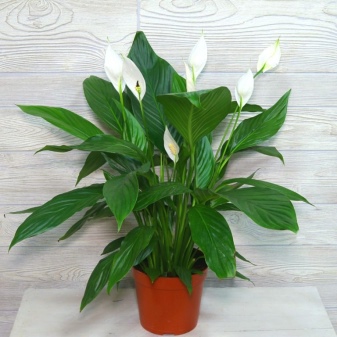
Where to put it?
The most popular place for placing indoor plants, adopted for a city apartment, is the window sill - there is more light there. Another argument in favor of the window sill is that the pots placed on it do not take up the space of the room. Glazed and insulated balconies and loggias have become an alternative to the windowsill. However, gradually indoor plants have mastered shelves, walls, and pieces of furniture, becoming, along with the pots that contain them, part of the interior. Nowadays, choosing a place for a pot with a houseplant is no longer so easy. Let's try to figure out where and which plants are best to plant, so that the properties for which they, in fact, were brought in, are fully manifested.

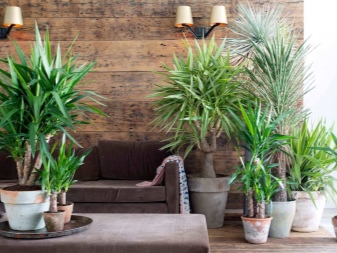
On the kitchen
In the kitchen space, it is customary to place plants outwardly, most often unassuming, but having a number of properties useful specifically for the kitchen. One of the most important can be the use of one or another part of the plant for food. One cannot but recall the often grown dill, lettuce or green onions on kitchen windowsills. The decorative properties of the latter, of course, are doubtful, but their presence in the kitchen is justified by the completely utilitarian needs for fresh herbs in that season when they are otherwise unavailable or too expensive.
Among traditional houseplants, peppermint or rosemary will look very organic in the kitchen, their leaves can be used as a seasoning or for adding to tea. However, the list of "kitchen" plants is not limited to this small list. Chlorophytum, bastard or cacti will perfectly decorate the kitchen.
It should also be noted that the last three flowers, according to popular rumor, are endowed with a number of useful properties.
They not only purify the air, but also help organize chaotic energies, directing them to the benefit of the owners.


In the children's room
Plants placed in the nursery must first of all be safe for children. Any thorns and needles are not acceptable. It is also important to find out if there are any poisons in their juice before placing flowers in the nursery. The rest of the children's room is a great place for various vegetation, as a rule, it brings nothing but benefit.
However, popular rumor still identified a number of plants that are almost indispensable for the room where children play and sleep. Here is a short list of these "baby" plants:
- begonia;
- sansevieria;
- lemon;
- Kalanchoe;
- chlorophytum;
- Saintpaulia (violet).


All listed plants are poison-free. Even if the child decides to taste the leaf, it will not cause unpleasant consequences. In addition, some of the plants on the list contain beneficial substances in their juice, and during the growth period they release them into the air.
In the bedroom
Many flower growers do not recommend placing vegetation in the bedroom at all, since at night the process of photosynthesis stops, and the plant, like all living things, continues to breathe, absorbing only oxygen, as it should be. During the day, this process is balanced by the release of oxygen. If the plant is actively growing, then, as a rule, it releases much more oxygen than it absorbs during respiration.


There is an equally numerous opposite opinion, the supporters of which assure that certain plants in the bedroom are simply necessary. First of all, these are the flowers that emit useful phytoncides that soothe the nervous system: all the same begonia, geranium, sansevieria, chlorophytum. All of them, according to popular beliefs, fill the room with oxygen and some useful substances that provide a calm healthy sleep.
Among the plants recommended for growing in the bedroom, there are plants that are completely opposite in their action - they support the attraction of spouses to each other. Most flower growers will unanimously point out that in this case there should be peperomia in the bedroom - a flower of love. Some people, for some reason, recommend a cactus as a plant that heightens the senses.


For the most useful indoor plants for your home, see the next video.































The comment was sent successfully.